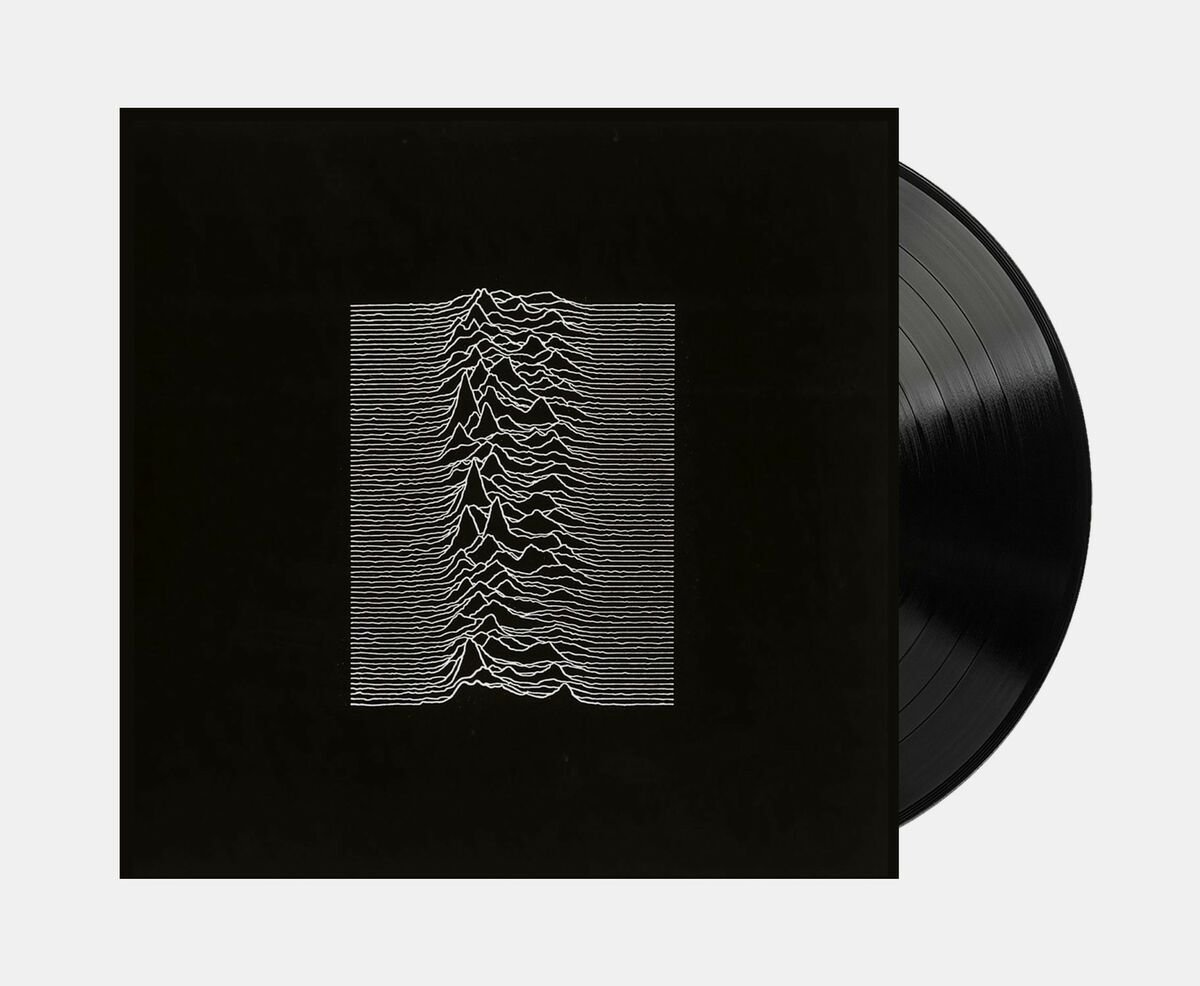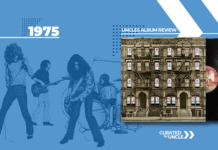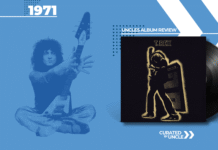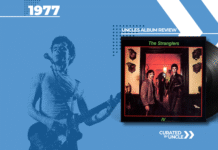Joy Division’s Unknown Pleasures (1979): The Sound of Gloom You Can Dance To
There are few albums that I can say make you feel like I’ve been locked inside a cold Manchester warehouse with a flickering lightbulb and only my inner demons for company. Unknown Pleasures is one of them. Released in 1979 by Joy Division, a band whose idea of a good time probably involved staring into the void and muttering poetry, this debut album didn’t just define a genre – it practically invented misery with a bassline.
It’s bleak. It’s brilliant. It’s what happens when punk takes itself seriously and swaps pogoing for panic attacks.
Table of Contents

A Quick History: From Salford to Sonic Despair
Joy Division began life as Warsaw, which already sounds like a place you’d go to cry. Formed in 1976 by Ian Curtis (vocals), Bernard Sumner (guitar), Peter Hook (bass) and Stephen Morris (drums), the band quickly distinguished itself from the safety-pinned cacophony of the punk scene by doing the unthinkable: learning how to play their instruments.
By the time they got to recording Unknown Pleasures with the now-mythic producer Martin Hannett, Joy Division had already begun morphing into something darker, stranger and far more unsettling. Hannett, who apparently had a spiritual bond with reverb, turned the raw punk into something ethereal, echoing and cold – like punk’s ghost had just risen from the grave to sulk eternally.
Track-by-Track Breakdown (or: A Guided Tour Through the Abyss)
1. Disorder
The album opens like an alarm bell for your soul. “I’ve been waiting for a guide to come and take me by the hand,” Ian Curtis intones, like a man who’s been stood up by God. The frantic drums and gliding bass feel like a panic attack wearing skinny jeans. It sets the tone: urgent, hopeless and weirdly danceable.
2. Day of the Lords
If you thought the first track was cheery, buckle up. This one sounds like someone reading war poetry through a black hole. “This is the room, the start of it all,” Curtis sings, in what must be the worst Airbnb review ever.
3. Candidate
A slow, creeping crawl through the corridors of paranoia. It’s like being stalked by your own sense of futility. The instrumentation is sparse, almost skeletal – a mood that could be best described as “funeral dirge on Valium.”
4. Insight
A rare moment of… optimism? Not quite. But there’s a strange, hypnotic beauty to this one. Curtis sounds almost detached, like he’s already transcended your petty emotions and now floats in the orbit of Saturn, judging your life choices.
5. New Dawn Fades
A fan favourite, and for good reason. The song builds like a nervous breakdown in slow motion. “A loaded gun won’t set you free,” Curtis declares, proving he was not exactly a motivational speaker.
6. She’s Lost Control
Inspired by a real-life epileptic woman Curtis knew, who literally lost control and tragically died – so yes, we’re deep in “don’t expect a dance remix” territory. Ironically, it’s one of the most rhythmically compelling tracks. The synths buzz like a broken machine that somehow learned to cry.
7. Shadowplay
One of the more “rock” songs on the album – if your idea of rock involves wandering a dystopian wasteland with only the ghosts of your past for company. Still, it slaps. This was the first track I heard from joy division and was my gateway drug that introduced me to their music many moons ago!, it’s a great place to start if you are unfamiliar with the band.
8. Wilderness
Curtis starts ruminating on religion here, which goes about as well as you’d expect. “I traveled far and wide through many different times,” he sings, sounding like Doctor Who if the TARDIS ran on despair.
9. Interzone
Suddenly, we’re in a slightly more punk territory. It’s fast. It’s loud. It’s like Joy Division briefly remembered they were once called Warsaw, then immediately regretted it.
10. I Remember Nothing
The final track is seven minutes of ambient dread – the sound equivalent of slowly sinking into black tar while someone reads Nietzsche at you. It ends with clinking glasses and murmured voices, like a haunted pub closing for eternity.
The Production: Martin Hannett’s Haunted Laboratory
I cannot talk about Unknown Pleasures without mentioning Martin Hannett – the producer, sound sculptor and probable Victorian ghost. Where most punk producers just aimed to record the chaos, Hannett dissected it and reassembled it into a minimalist cathedral of echoes.
He made the drums sound like machine guns fired from under water. He isolated every sound into its own padded cell. It’s not music so much as it is space – each note floating in a vacuum of existential nausea.
The Cover Art: Waveforms of Doom
Designed by Peter Saville and based on a data plot of pulsar CP1919, the album’s iconic white-on-black waveform cover became the universal shorthand for “I own at least one black turtleneck.” It’s science. It’s art. It’s also been slapped on enough t-shirts to make your average Hot Topic cashier sigh with weariness.
Saville didn’t even hear the album before designing it. Somehow, that makes perfect sense.
Legacy: Misery, Marketed
At the time of release, Unknown Pleasures wasn’t a smash hit. It didn’t chart. It wasn’t on the radio. It didn’t go gold until decades later, because apparently the world had to marinate in late capitalism before it truly understood nihilism.
Then, of course, came Ian Curtis’s suicide in 1980 – a tragic full stop to a life defined by seizures, depression and the sort of fame that chews you up and spits you into rock folklore.
Suddenly, Unknown Pleasures became mythic. An album haunted not just by atmosphere, but by real tragedy. It became shorthand for “deep”, a rite of passage for gloomy teens and a favourite of anyone who’s ever stared blankly out of a train window at 2 a.m. while questioning everything. (like me, post boozy night out travelling from Manchester Piccadilly to Leeds!)
My Final Thoughts: Misery, But Make It Art
Unknown Pleasures is not a fun album. It will not cheer you up. It will not make you want to party. But it will make you feel something – which, in this attention-fractured, emoji-smeared hellscape we call 2025, is a radical act.
It’s the sound of cold anxiety rendered beautifully. A post-punk requiem for the modern soul. And the weirdest part? You can dance to it.
Sort of.
If your version of dancing involves standing motionless in a dark corner while slowly disintegrating inside.

If You Like Unknown Pleasures, I Recommend These Albums:
Closer – Joy Division (1980) – If Unknown Pleasures is a bleak warning, Closer is the actual funeral. Released two months after Ian Curtis’s suicide, it’s an even colder, more clinical descent into despair. Bleak, brilliant and spiritually incompatible with anything involving daylight.
Pornography – The Cure (1982) – Robert Smith’s goth opus kicks off with “It doesn’t matter if we all die” – so, not exactly ABBA Gold. A wall of sonic dread soaked in distortion, depression and the kind of self-loathing you could bottle and sell at Hot Topic.
The Holy Bible – Manic Street Preachers (1994) – Imagine if Richey Edwards wrote a thesis on human suffering and then screamed it into a meat grinder. The Holy Bible is ferocious, political and so unrelentingly dark it makes Unknown Pleasures look like a feel-good rom-com soundtrack.

Unknown Pleasures
| # | Track | Duration |
|---|---|---|
| 1 |
Disorder - 2019 Digital Master
Joy Division
|
03:32 |
| 2 |
Day of the Lords - 2019 Digital Master
Joy Division
|
04:49 |
| 3 |
Candidate - 2019 Digital Master
Joy Division
|
03:05 |
| 4 |
Insight - 2019 Digital Master
Joy Division
|
04:28 |
| 5 |
New Dawn Fades - 2019 Digital Master
Joy Division
|
04:48 |
| 6 |
She's Lost Control - 2019 Digital Master
Joy Division
|
03:57 |
| 7 |
Shadowplay - 2019 Digital Master
Joy Division
|
03:55 |
| 8 |
Wilderness - 2019 Digital Master
Joy Division
|
02:38 |
| 9 |
Interzone - 2019 Digital Master
Joy Division
|
02:16 |
| 10 |
I Remember Nothing - 2019 Digital Master
Joy Division
|
05:55 |












